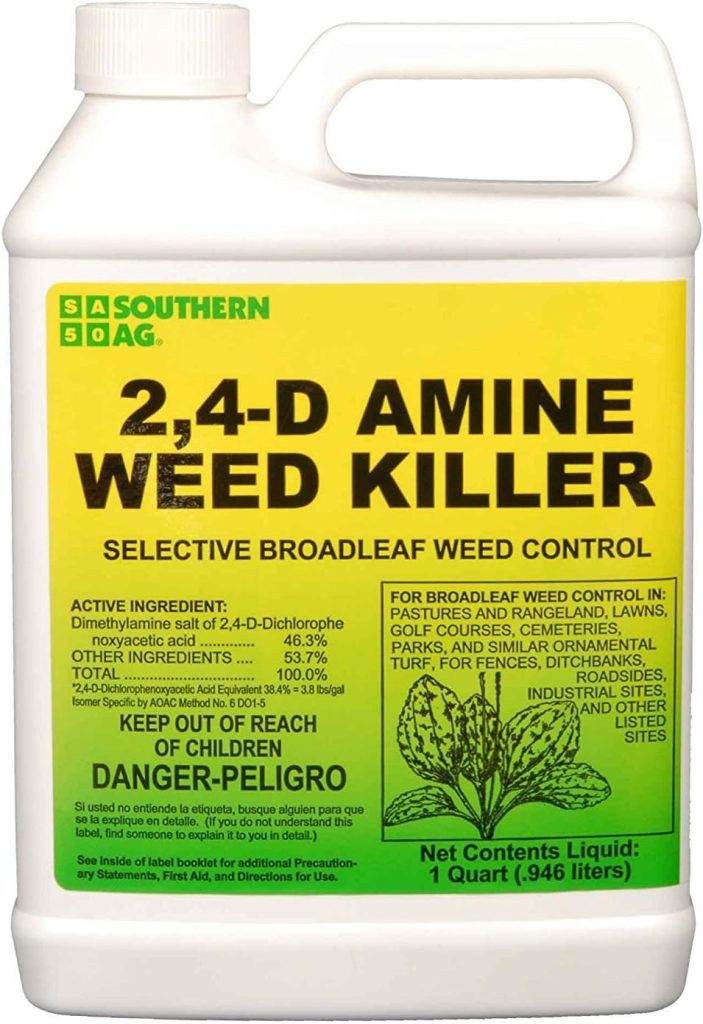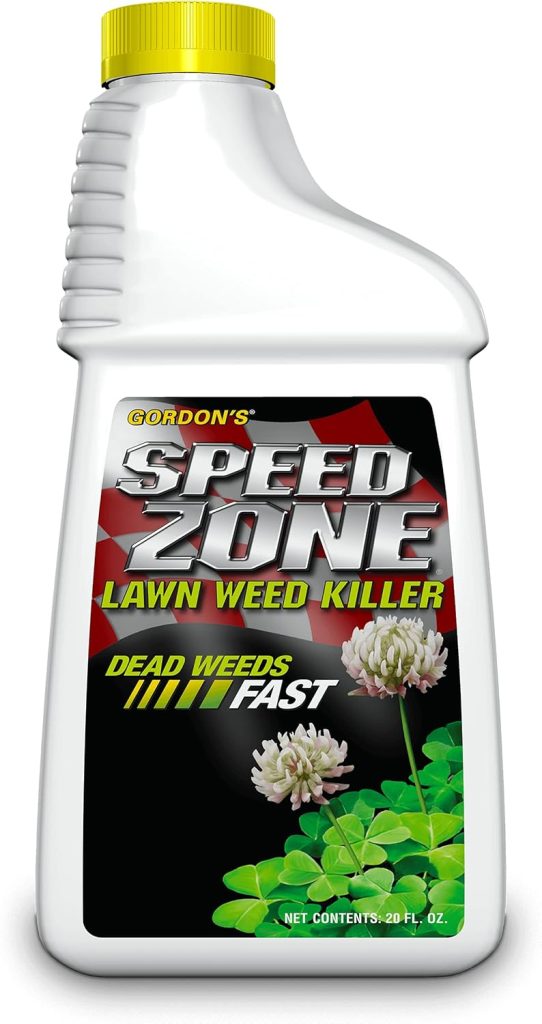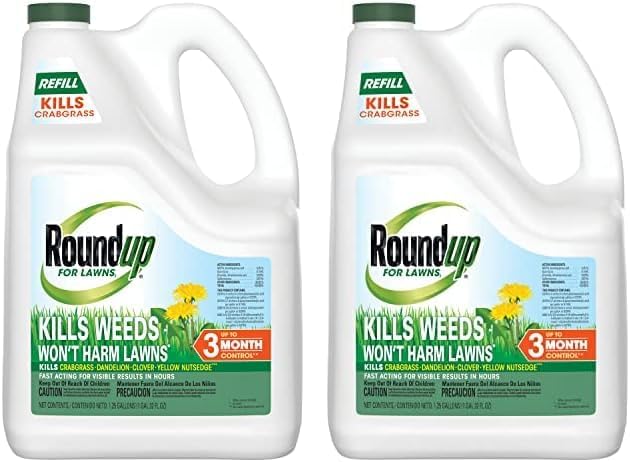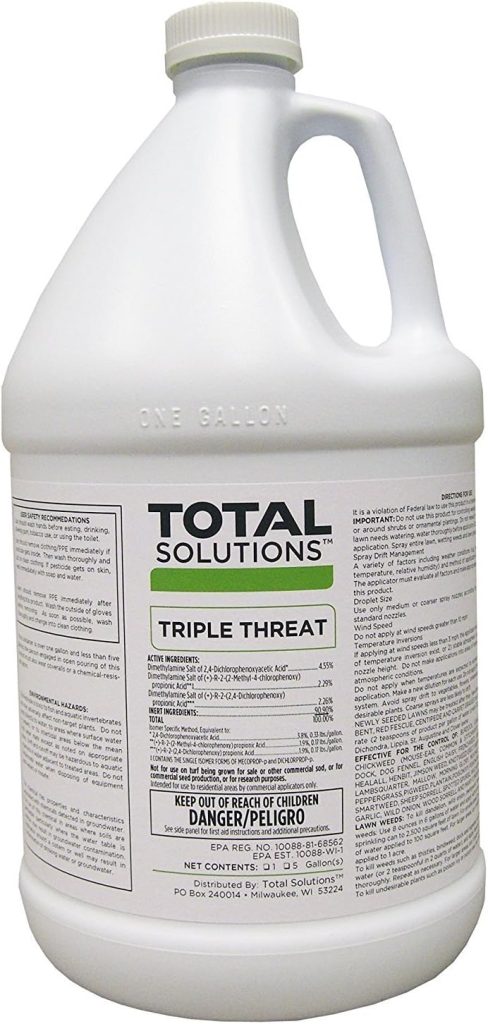If you’ve ever spent hours nurturing your lawn—watering, mowing, aerating, and feeding it—only to see pesky weeds pop up overnight, you’re not alone. Weeds can be incredibly frustrating. They invade the lush green carpet you’ve worked so hard to create, often outcompeting your grass for nutrients, sunlight, and space.
The truth is, even the most carefully maintained lawns are vulnerable. A single gust of wind can drop an unwanted seed into your soil, and in just a few days, that small invader turns into a persistent nuisance. Worse still, weeds are notoriously hard to eliminate completely—especially without damaging the grass you’re trying to protect.
That’s where weed killers come in. A good weed killer can mean the difference between a healthy, vibrant lawn and one overrun with dandelions, crabgrass, clover, and broadleaf weeds. But choosing the right product isn’t as easy as picking the first bottle off the shelf. There are dozens of options, each formulated differently, and not every solution works for every yard.
Some weed killers are selective, meaning they target specific types of weeds while sparing your grass. Others are non-selective—great for driveways and patios but disastrous if sprayed on a healthy lawn. On top of that, many formulas contain powerful chemicals that can do more harm than good if misused.
Don’t worry—we’ve got you covered.
In this guide, we’ll walk you through everything you need to know about choosing the right weed killer for your lawn. From understanding how they work to reviewing the top-rated products available in 2025, this article is designed to help you make an informed, confident decision.
What Is a Weed Killer and How Does It Work?
Before applying any herbicide to your lawn, it’s important to understand what you’re working with. Weed killers, also known as herbicides, are chemical agents designed to control or eliminate unwanted vegetation. They come in two main types:
- Selective Weed Killers: These target specific weed species without harming your grass. Ideal for home lawns.
- Non-Selective Weed Killers: These eliminate all vegetation they touch. Best used in cracks, pathways, or areas where no plant life is desired.
Historically, people used salt to kill weeds—but this method altered the soil chemistry and prevented future growth. Today’s modern formulas mimic plant hormones, disrupting the weed’s growth cycle. Some absorb through the leaves (foliar-absorbed), while others are drawn in through the roots.
Understanding the delivery method and the plant type the herbicide targets will help you avoid harming your lawn unintentionally.
Why It’s Important to Choose the Right Lawn Weed Killer
Not all weed killers are safe for all grass types. For instance, a product that works wonders on Bermuda grass may damage fine fescue or St. Augustine. Additionally, applying the wrong concentration or during the wrong season can reduce effectiveness or cause browning and patchy growth.
That’s why it’s crucial to evaluate:
- Product safety for pets, kids, and pollinators
- Your lawn’s grass type
- The kinds of weeds you’re dealing with
- Local climate and soil conditions
The products
Coming Up: Our Top 5 Picks for Best Lawn Weed Killers in 2025
In the next section, we’ll break down the five best weed killers available this year—complete with pros, cons, safety tips, and where to buy them. Whether you’re battling dandelions or tackling a full-blown crabgrass infestation, you’ll find a solution tailored to your lawn’s needs.
1. Southern Ag 2,4 – D Amine Weed Killer

Southern Ag 2,4-D Amine Weed Killer Review
If your backyard has started looking more like a battlefield of weeds than a peaceful patch of green, Southern Ag’s 2,4-D Amine Weed Killer might be exactly what you need. This isn’t just another herbicide—it’s a trusted tool that’s been helping homeowners, landscapers, and even farmers reclaim their turf for years.
What makes it stand out is its versatility. Whether you’re dealing with an overgrown lawn, maintaining a fence line, managing a golf course, or protecting crop areas like corn and small grains, this weed killer adapts. It works both as a post-emergent (kills weeds that have already sprouted) and pre-emergent (prevents future growth), which gives you more control over your yard’s health year-round.
The science behind it is smart. It targets broadleaf weeds—the usual culprits like dandelion, chickweed, cat’s ear, and lamb’s tongue—while leaving your grass untouched. That’s because it’s absorbed by those broadleaf plants but not by grasses, so you won’t have to worry about damaging the green you want to keep.
Application is straightforward but does require attention. Mix 2 to 3 tablespoons into 4 gallons of water, and that should be enough to treat about 1,000 square feet. It’s best applied using a low-pressure, coarse spray for even distribution and deeper impact.
One downside? The price may feel a little steep for casual users. But in terms of coverage and effectiveness, most people find that it pays off—especially if you’re tired of seeing weeds bounce back after every rain.
Pros:
- Highly versatile for multiple environments
- Works as both pre-emergent and post-emergent
- Targets common broadleaf weeds effectively
- Safe for lawns—doesn’t harm your grass
Cons:
- Slightly higher price point than basic options
Click Here To Read Customers Reviews on Amazon
2. Ortho Weed B Gon Weed Killer

When it comes to lawn care, Ortho has long been a name people trust—and with good reason. Their Weed B Gon formula proves once again that they know how to deliver a product that works where it matters. I’ve personally used this one on several problem spots in my backyard, and the results didn’t disappoint.
What makes it stand out? For starters, it targets over 250 types of broadleaf weeds and wipes them out to the root. Dandelions, clover, oxalis—you name it, it doesn’t stand a chance. I noticed visible wilting within a day, and complete die-off followed quickly after that. Even better, it becomes rainproof just one hour after application. That’s a major win when you’re working with unpredictable weather.
Another plus: this is a post-emergent herbicide, which means it’s designed to kill weeds after they’ve appeared—not just keep them from growing. While that makes it highly effective against existing infestations, it won’t prevent new weeds from sprouting, so timing your application is key.
It works throughout the year, even in cooler weather. And though it’s powerful, I’ve never seen it damage my grass. Just be sure to follow the label instructions carefully, and avoid overspraying onto desirable plants or flowers.
If you’re dealing with stubborn weeds that laugh off regular lawn treatments, this might just be your answer. It doesn’t promise magic—but it gets pretty darn close.
Pros:
- Kills 250+ weed types
- Rainproof within an hour
- Fast visible results
- Effective year-round
Cons:
- Doesn’t prevent new seeds from germinating
Click Here To Read Customers Reviews on Amazon
3. PBI/Gordon 652400 Speed Zone Lawn Weed Killer

If you’re battling weeds in a cooler climate, this one’s a game-changer. The PBI/Gordon Speed Zone 652400 is specially designed to work even when temperatures drop, making it one of the best choices for early spring or late fall weed control.
A single 20-ounce bottle covers up to 16,000 square feet—more than enough for most lawns—and you’ll start seeing results within just a few hours. That fast-acting formula works wonders on stubborn invaders like ground ivy and clover, and you can safely reseed your lawn in as little as two weeks after application.
The one thing to watch out for? It’s powerful. So powerful, in fact, that it may damage St. Augustine grass. The good news is it’s completely safe on Bermuda grass, which is one of the most common types in many regions.
Pros:
- Effective in cool weather
- Fast results
- Excellent for tough weeds like ground ivy and clover
- Large coverage area
Cons:
- May harm St. Augustine grass
Click Here To Read Customers Reviews on Amazon
4. Roundup for Lawns RTU Refill

If crabgrass is your arch-nemesis and you live in a region where rain seems to have no off-switch, Roundup for Lawns RTU Refill might be your new best friend. This formula is tailor-made to target the most persistent lawn weeds—crabgrass included—without harming the turf grasses typical of northern regions like bluegrass, ryegrass, and fescue.
One standout feature is its rainproof protection. Within just 3 hours of application, it locks in, so even if a surprise shower rolls through, your weed-killing efforts won’t be washed away. That’s a huge win for folks in wet climates where timing lawn treatments between storms can feel impossible.
However, if you’re expecting overnight miracles, this isn’t the fastest-working product on the shelf. It takes a bit more time to show visible results compared to some high-speed formulas. But once it starts working, it delivers a thorough kill, going straight to the root so the weeds stay gone.
Pros:
- Rainproof in under 3 hours
- Safe for cool-season grasses (bluegrass, rye, fescue)
- Strong on crabgrass and other tough weeds
- Targets roots for lasting results
Cons:
- Slower to show visible results
Click Here To Read Customers Reviews on Amazon
5. Triple Threat Selective Weed Killer Herbicide for Lawns and Turf

If your lawn is under siege by broadleaf invaders, Triple Threat Selective Weed Killer brings some serious firepower to the front lines. Designed to take out stubborn culprits like burdock, plantain, mallow, wild aster, and French weed, this concentrated formula lives up to its name by delivering a multi-pronged attack.
Just two tablespoons mixed into a gallon of water is enough to treat up to 400 square feet of lawn, making it an economical choice for homeowners dealing with widespread weed problems. It works quickly, too—you’ll typically see noticeable results in just a few days.
That said, timing is everything with this herbicide. It’s not rainproof, and any watering or rainfall within 24 hours of application can significantly reduce its effectiveness. So, if you live in a wet climate or you’re not great at checking the weather forecast, this could be a downside. Careful planning is key to getting the most out of this product.
Pros:
- Budget-friendly and long-lasting
- Kills a wide range of broadleaf weeds effectively
- Concentrated formula covers a large area
- Fast-acting results
Cons:
- Loses potency if it rains or is watered within 24 hours
- Requires careful timing and planning for best results
Click Here To Read Customers Reviews on Amazon
Things to Keep in Mind When Choosing the Best Lawn Weed Killer
When it comes to maintaining a lush, healthy lawn, nothing is more frustrating than a weed invasion. Whether you’re dealing with crabgrass, dandelions, or invasive clover, selecting the right weed killer for lawns is essential—and using it correctly is just as important. Not all herbicides are created equal, and the wrong one can do more harm than good.
In this section, we’ll break down the essential classifications of herbicides and how to match them with your lawn’s needs—along with examples from our top-rated products to help guide your decision.
Pre-Emergence vs. Post-Emergence Herbicides
One of the first decisions you’ll need to make is whether you need a pre-emergent or post-emergent weed killer.
- Pre-emergent herbicides are designed to prevent weeds from sprouting in the first place. These are great for controlling seasonal nuisances like crabgrass before they take hold.
- Example: Roundup for Lawns RTU Refill is effective when applied before crabgrass begins germinating and is ideal for northern grasses like ryegrass and fescue.
- Post-emergent herbicides target weeds that have already surfaced, killing them at or below the soil line.
- Example: Ortho Weed B Gon Weed Killer is a post-emergent solution that kills over 250 types of weeds—making it ideal once your problem has already emerged.
Contact, Systemic, and Residual Herbicides
1. Contact Herbicides
Contact herbicides kill the part of the plant they touch—ideal for annual weeds like lamb’s quarters or chickweed. However, they may not reach deep-rooted perennials.
- Example: Triple Threat Selective Weed Killer works by directly targeting broadleaf weeds through fast-acting surface absorption. It’s great for spot treatment of visible invaders.
2. Systemic Herbicides
Systemic herbicides are absorbed through the foliage and transported throughout the plant, down to the roots—making them a smart choice for perennial weeds like dandelions and ground ivy.
- Example: Southern Ag 2,4-D Amine Weed Killer is both pre- and post-emergent and is absorbed systemically by broadleaf weeds, leaving grass unharmed.
3. Residual (Soil-Acting) Herbicides
Residual herbicides poison the soil to prevent future growth. These are powerful and should be used with caution, especially around edible plants.
While none of the products on our list are classified as full residual herbicides (due to potential soil damage), some, like PBI/Gordon Speed Zone Lawn Weed Killer, offer extended effectiveness—even in cool-weather climates—making them excellent for stubborn, deep-rooted weeds like ground ivy or clover.
Know Your Weed Enemy
Before applying any herbicide, it’s critical to identify the type of weeds on your lawn. Are you dealing with annuals or perennials? Cool-season or warm-season weeds?
- For crabgrass, use a pre-emergent like Roundup for Lawns RTU Refill early in the growing season.
- For dandelions, a post-emergent systemic like Ortho Weed B Gon or Southern Ag 2,4-D is effective.
- For ground ivy, consider PBI/Gordon Speed Zone, which performs well even in early spring or fall.
- For a wide mix of weeds, Triple Threat offers fast action and broad coverage—just avoid applying before rain.
Application Tips
- Always read the label. Products like Southern Ag and Ortho Weed B Gon specify water ratios and spray types (e.g., coarse low-pressure).
- Apply when the lawn is dry and rain-free for at least 24 hours. For example, Triple Threat loses potency in rain, while Roundup for Lawns becomes rainproof in just three hours.
- Avoid mowing immediately. Let the weed killer work by waiting 24–48 hours before cutting grass.
FAQs: Weed Killers for Lawns
Q: Can I apply weed killer and fertilizer together?
A: Some “weed and feed” products are designed for this, but if you’re using separate products, wait 2–4 days between applications.
Q: How long should I wait before mowing?
A: A 24–48 hour window after application allows full absorption by weed foliage.
Q: Are organic lawn herbicides effective?
A: They work best on young weeds and require frequent reapplication. Vinegar-based and clove oil herbicides are common alternatives.
Q: Are these products safe for pets?
A: Most commercial weed killers are not pet-safe until fully dried. Keep pets off treated areas for at least 24 hours and always check product warnings.
Final Thoughts
Controlling weeds doesn’t have to be overwhelming. With proper identification, timing, and the right product, you can reclaim your lawn from stubborn invaders. Whether you need a pre-emergent formula like Roundup, a cold-weather solution like PBI/Gordon, or a broad-spectrum powerhouse like Southern Ag, each product on our list has been tested for performance and safety.
For long-lasting results, combine a strategic herbicide plan with proper lawn care: mow regularly, water deeply but infrequently, and fertilize on schedule. Your lawn will thank you—with lush, weed-free greenery that stands the test of time.
Leave a Reply
You must be logged in to post a comment.